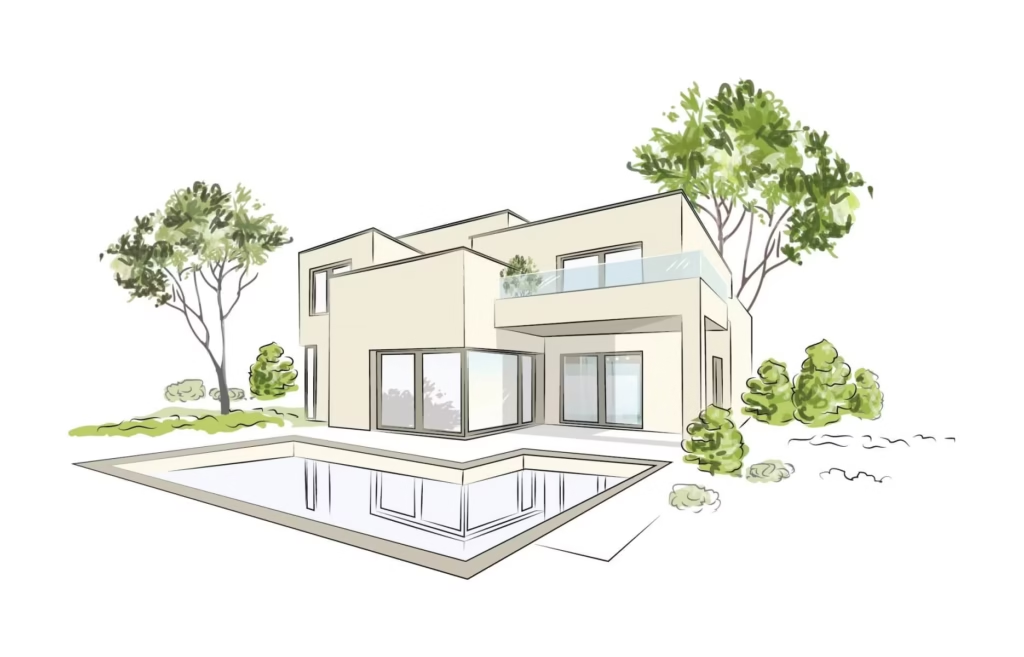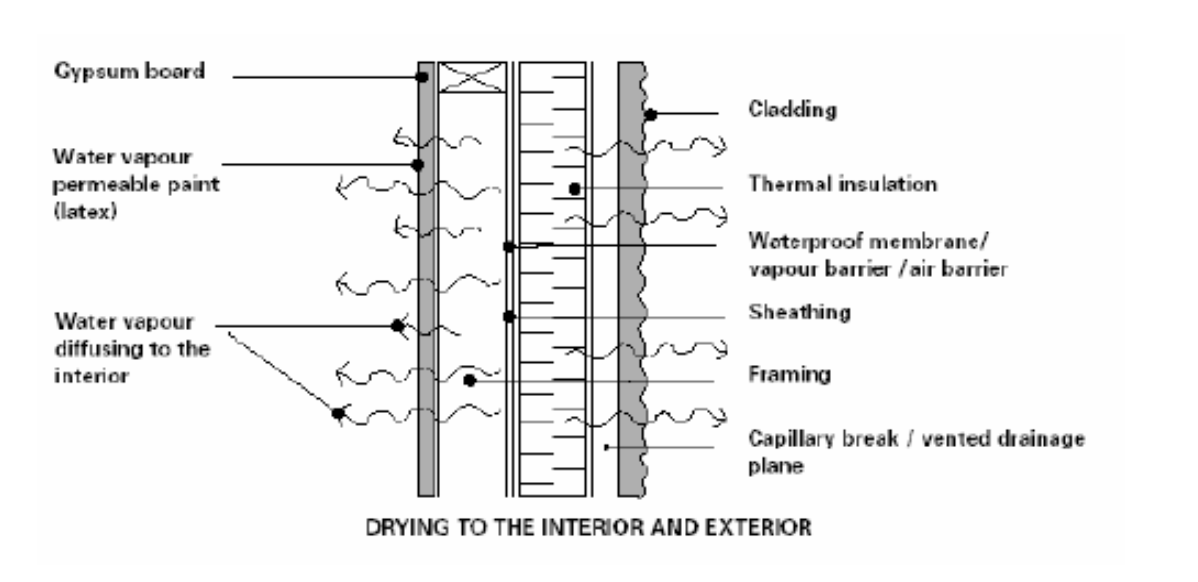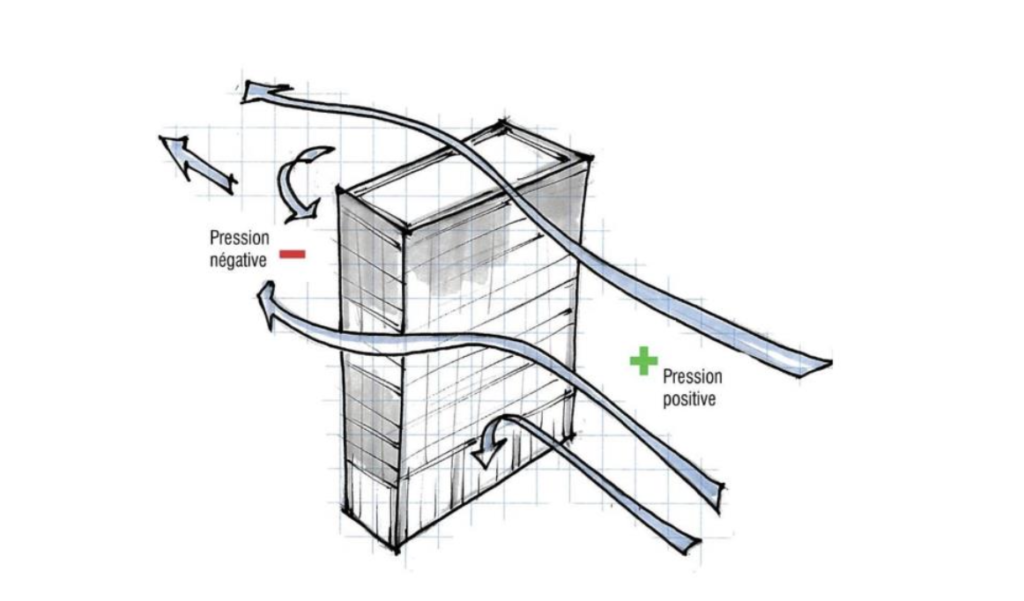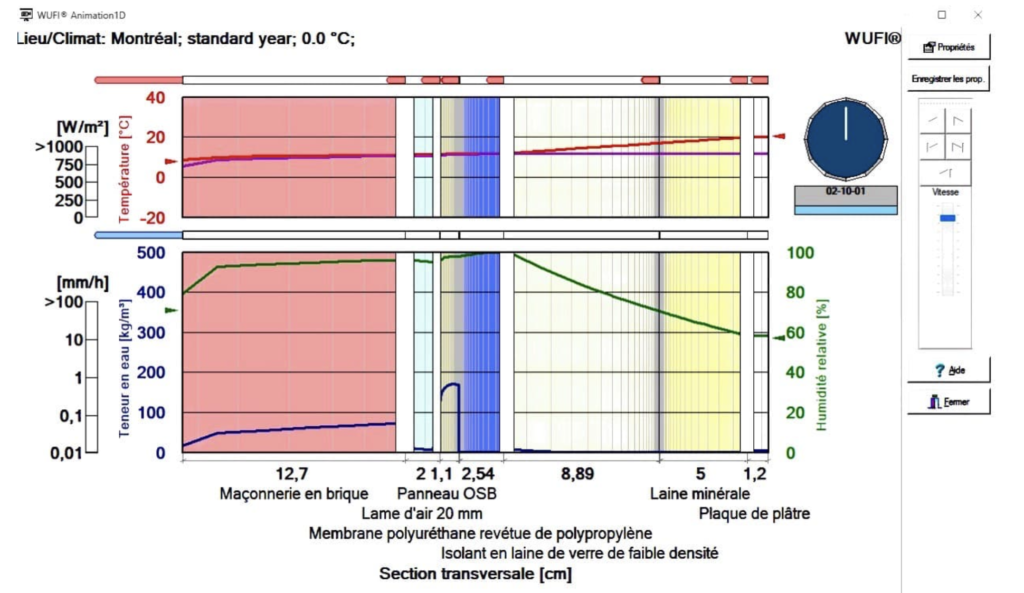
Project Details
Duration : 3 months
Client : Laval University
Team membres : 3
Deliverables : 250 m2 building simulation
Introduction
In response to the growing challenges of climate change and rising energy demands, my team and I undertook a detailed study on enhancing the energy efficiency of a building model envelope. This project, conducted during the winter of 2023 in Quebec City, aimed to evaluate the impact of various energy-saving measures and their combined effects on a two-story residential building.
Project Goals
The major goal was to enhance building envelope performance to improve energy efficiency. Therefore, our task was to optimize insulation, windows and air barriers while ensuring cost-effective and practical implementation for a building model simulating Quebec City’s hard conditions :
- Develop a long-lasting building envelope resistant to environmental conditions
- Reduce heat loss and optimize insulation to lower energy consumption
- Ensure thermal comfort in Québec’s extreme weather conditions,

Study Features
One key improvement was optimizing building components. We increased the thermal resistance of walls, roofs, and floors by using eco-friendly materials like cellulose insulation and EnergyStar-rated hybrid windows. Additionally, advanced air and vapor barriers reduced air infiltration, improving indoor thermal stability.
To enhance efficiency further, we introduced dynamic thermal zoning. The building was divided into six sections, including the attic, exterior walls, and basement. This zoning method allowed for targeted improvements, ensuring each area operated at peak performance.

Results and Insights
This study highlighted the importance of combining energy-efficient measures. It showed that integrating multiple strategies reduces energy consumption more effectively than applying them separately.
Additionally, the study provided a framework for future research. It emphasized the need to evaluate HVAC system performance, economic feasibility, and lifecycle assessments for a more comprehensive design approach.
The primary goal was to enhance building energy efficiency through optimized design and material selection. To achieve this, we focused on solutions that improve insulation, reduce heat loss, and ensure long-term durability.
- Advanced air and vapor barriers were integrated to minimize heat transfer and enhance indoor thermal stability.
- Dynamic thermal zoning was implemented to fine-tune energy performance across different sections of the building.
- Durable, cost-effective materials like galvanized steel and vinyl siding were chosen to provide thermal efficiency and long-lasting protection.

Challenges and Limitations
Designing an energy-efficient building envelope was a significant challenge. Therefore, our team developed smart solutions to improve performance and ensure reliability. Furthermore, careful planning was essential because various factors, including extreme weather and energy simulations, affected efficiency.
Weather Variability and Thermal Bridging
Quebec’s climate varies greatly, from freezing winters to hot summers. Consequently, the building needed to be efficient year-round. To achieve this, we selected durable materials and, moreover, improved insulation. Thermal bridges lead to heat loss and uneven temperatures. Therefore, minimizing them was crucial. To address this, we used advanced design methods and, in addition, high-performance insulation. Consequently, weak points were reduced, leading to better energy efficiency and lower heating costs. As a result, indoor comfort is maintained throughout every season, thus reducing energy waste.
Testing Accuracy
It was challenging to simulate energy performance across different building scenarios. However, we overcame this by using detailed models and rigorous testing. As a result, the building performs reliably in real-world conditions, optimizing energy use.
Project Outcomes
Beyond the technical specifications and design challenges, the “Better Building Envelopes” project resulted in valuable outcomes that extend beyond the building itself. These outcomes include enhanced expertise, strengthened collaboration, and a tangible deliverable showcasing the project’s success :
- Enhanced Expertise: The project provided valuable experience in analyzing and modeling building envelopes, deepening our understanding of energy-efficient design principles.
- Leadership and Collaboration: We developed leadership and teamwork skills through collaborative problem-solving and project management.
- Thermal Report: The project resulted in creating a comprehensive thermal report, documenting the energy performance and efficiency of the building envelope.